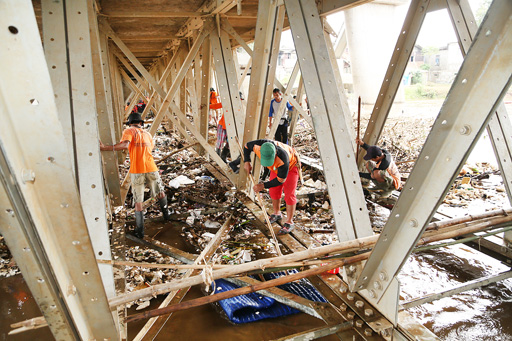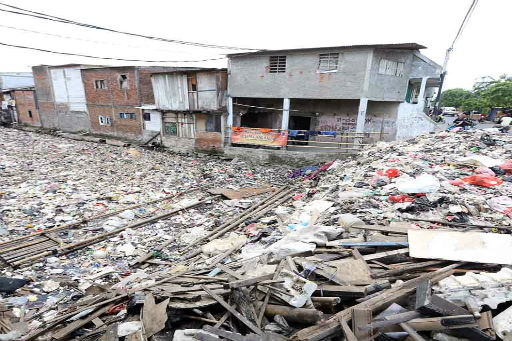River of garbage
Domestic waste, at 80 percent, remains the top contributor to water pollution in Indonesia.
“Between water, air and land pollution, the most worrisome threat turns out to be water pollution. Eighty percent of water pollution is caused by domestic activity,” Karliansyah, the deputy minister for pollution control at the Environment Ministry said on Thursday. According to the “Indonesian Environmental Status” report published in June by the Ministry, 82 percent of the 52 rivers surveyed are polluted with domestic and industrial waste. The problem is exacerbated by over use of water and bad spatial planning.

The report, based on observation from 2008 to 2012, shows that the quality of water in the nations rivers is decreasing, especially in Riau, Jambi, Central Java, East Nusa Tenggara, Southeast Sulawesi and Maluku. The rivers mostly are contaminated with e-coli bacteria from human feces, indicating the poor quality of waste water treatment systems in cities and villages throughout Indonesia.
“Some 53 percent of the population pours domestic waste from bathing, cooking and washing, into rivers without treatment in septic tanks,” he told The Jakarta Post. Every day, 14,000 tons of human feces pours into rivers, the water of which is used by communities for daily activities like washing dishes, creating risks of ailments like typhoid fever and dysentery.

Data from the Ministry has shown that from 2006 to 2011 the number of houses with septic tanks had increased from 40.7 percent to 60.3 percent. Jakarta, has the highest percentage of home septic tanks at 93.9 percent, while Papua has the lowest, at only 28.4 percent.
Many households do not have septic tanks because of lack of space, high cost and the culture of defecating in rivers.Despite the increase in the number of septic tanks, the government can only process 5.4 percent domestic waste. Abetnego Tarigan, the executive director of the Forum for the Environment, believes adequate water waste treatment like septic tanks are mostly are used in private housing in big cities.

“Some private housing complexes, including those in Jakarta, Bogor and Tangerang, provide adequate facilities like proper septic tanks,” he said. The government’s waste water treatment does not reach people in remote areas, who remain unaware of water related environmental and health issues.
Mukri Friatna from the advocacy division of the forum pointed out that government waste treatment had focuses on industrial waste.“If the government wants to reduce the amount of water contaminated with e-coli bacteria, they should build communal septic tanks rather than merely providing industry with treatment systems,” he said.

The Environment Ministry plans to build communal waste water treatment centers as pilot projects in various areas.
The pilot project budget alone reaches Rp 99 billion (US$ 9 million). “This year we will build seven communal waste water treatment facilities in Lumajang and Jombang in East Java as well as in Bogor, Central Java, Sorong and Manokwari in Papua and East Nusa Tenggara,” he said.
Last year, the ministry built some communal waste water treatments facilities in Jakarta, Surakarta and South Kalimantan to prevent the groundwater pollution from e-coli bacteria. (tam)
- See more at:http://www.thejakartapost.com/news/2013/07/06/rivers-filth-flow-throughout-land.html#sthash.wEX5d7Bn.dpuf
| Attachment | Size |
|---|---|
| 01River.jpg | 103.54 KB |
| 09river.jpg | 117.72 KB |
| p04-bseaofgarbage.jpg | 124.02 KB |
| Garbaga14.jpg | 67.12 KB |
- Editor1's blog
- Login to post comments